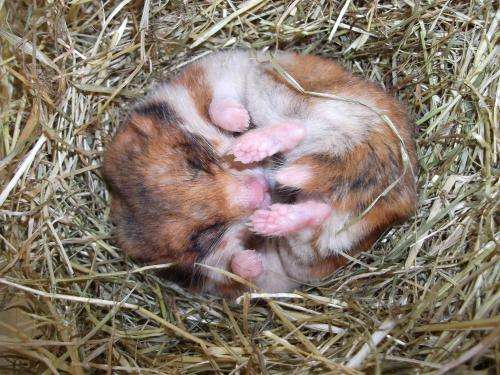And the beat goes on: The reliable heartbeat of hibernators

At the current temperatures, all hibernators have probably emerged from their winter hibernation and are enjoying the warm weather. However, this is quite different during the cold season. Many small mammals such as marmots, hedgehogs, bats and some hamsters, and even some birds have a particular skill: they can induce a state of inactivity and reduced metabolic rate to significantly lower their energy consumption when food becomes limited and ambient temperatures drop. Fat depots accumulated before the winter, are consumed during hibernation.
During this state, known as torpor, their heartbeat and breathing slow down and the body temperature can approach 0°C. To date, the mechanisms underlying the maintenance of cardiac function at low body temperatures are poorly understood. Now, scientists at the Research Institute of Wildlife Ecology at the University of Veterinary Medicine, Vienna, together with colleagues at the University of Groningen in the Netherlands, have found that certain omega-3 and omega-6 fatty acids regulate the cardiac function and hence hibernation. These fatty acids control the process of maintaining a regular heartbeat, achieving lower body temperatures during hibernation and thereby ensuring the hibernator's survival.
Fatty acids regulate hibernation
In the present study Sylvain Giroud and colleagues were able to demonstrate that a specific omega-6 fatty acid, Linoleic acid (LA), regulates cardiac function and ensures a regular heartbeat during hibernation. The scientists found that hibernators show higher levels of LA in their heart tissue compared to animals in a non-hibernating state. The scientists determined the cardiac fatty acid composition of hibernating and non-hibernating Syrian hamsters (Mesocricetus auratus). They found that hamsters had higher LA levels during the cooling phase and in deep hibernation than during the active period. Additionally, the researchers investigated a specific omega-3 fatty acid, Docosahexaenoic Acid (DHA), which was significantly lower in the examined animals during hibernation. The scientists concluded that both high levels of LA and low levels of DHA are essential for hibernation. According to the study, the amounts of these specific omega-6 and -3 fatty acids in the heart can be regulated up and down, depending on the season. In summer, unlike during hibernation, high levels of DHA protect the heart from overexertion.
Activity of calcium pump in the heart
Certain fatty acids can influence the activity of so-called calcium pumps. These pumps are responsible for proper muscle contractions in the body. The researchers were able to show that animals in hibernation have higher amounts of LA in their hearts. In turn, these fatty acids activate a specific calcium pump (SERCA), thus ensuring proper cardiac contractions and the survival of hibernators at low body temperatures. A rhythmic heartbeat is dependent upon the activity of this pump. In non-hibernating animals, low temperatures can hamper the operation of the pump and lead to severe cardiac arrhythmias that can potentially lead to cardiac arrest due to an overload of calcium in the heart. High levels of LA in hibernating animals ensure a sufficiently quick calcium transport, enabling the heart to keep beating at regular intervals.
Nutrition affects hibernation
Omega-3 and omega-6 fatty acids are essential nutrients and must be obtained from food. Although the body regulates the level of fatty acids in each tissue, food supply plays an important role for hibernating animals. It is known, for instance, that wild marmots actively select plants that contain high amounts of omega-6 fatty acids during the fall to prepare for hibernation. In the present study, all animals were fed continuously with the same amounts of various fatty acids. Nevertheless, the measured amounts in the heart tissue varied, according to the physiological stage of the hamsters. As Giroud explains, "The fact that these effects of fatty acids on the calcium pump in the heart and hence on temperatures during hibernation can be detected even in animals fed identical food lead us to think that the effects of the cardiac fatty acid composition may be even stronger in free-living hibernators exposed to higher variability in food resources, or with limited access to essential fatty acids".
More information: Giroud, S. et al. Membrane phospholipid fatty acid composition regulates cardiac SERCA activity in a hibernator, the Syrian hamster (Mesocricetus auratus), PLOS ONE (May 2013). www.plosone.org/article/info%3Adoi%2F10.1371%2Fjournal.pone.0063111
Journal information: PLoS ONE
Provided by University of Veterinary Medicine -- Vienna















